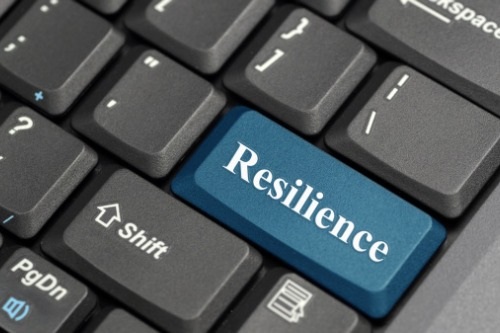Business and supply chain resilience during Covid-19

The impact on business and supply chains is starting to cut deeply into normal operations for every sector of industry and the pattern of Covid-19 spread means companies are seeing growing numbers of employees unable to attend their normal place of work.
The intensity of the impacts on businesses and supply chains are expected to accelerate in the near term and then extend to the medium term. Taking protective actions now and being prepared for the coming weeks and months are important steps for all companies.
It is important too to not lose sight of the risks that were present before Covid-19 emerged - a serious accident or injury or a major fire has the potential to be equally or potentially more impactful at this time.
Keeping your eye on the ball
Reinforce the message to your staff that their safety is still top priority. Make it clear that the ongoing challenges do not compromise company procedures and good practice and that working outside of these or exemption from them will require the highest level of authority and comprehensive and detailed control.
Recognise staff commitment to your organisation but also ask them not to be ‘innovative’ or ‘resourceful’ to get the job done. If they think there is a better way, then raise it through proper channels.
Ensure that essential tasks such as maintenance, safety inspections and quality control continue at a level to match the production and service levels. If there are fewer staff available to perform these tasks, this might require:
- production speeds/volumes to be reduced from ‘normal’
- dwell times for WIP and key equipment to be extended to permit proper QC and safety checks
- or operating periods to be shortened so maintenance and cleaning can be done without compromise.
If there are staff shortages, don’t compromise safety or your operation by assigning tasks to non- qualified / untrained personnel. Ensure up to date skills matrices and training records are available to be consulted. If there is a critical need for this, then document the individual’s extent of competence, the gaps between this and full qualification for the activity / task, also document the additional measures you will take to ensure their safety and safe performance of the activity.
Consider how you can move multi-skilled staff between tasks to maintain critical production, maintenance and safety activities. If maintenance and safety staff numbers can’t be kept to minimal required levels, re-schedule production and service levels to match availability. Don’t skimp on QC, safety, maintenance and cleaning as this is likely to lead to undesirable outcomes.
It may not be possible to meet normal levels of planned maintenance / testing and this is understandable. Ensure that you review your maintenance activities. Give priority to safety critical equipment. Be clear at what level equipment cannot be used due to lack of maintenance and ensure that at that point it is securely locked out of service with clear instruction for it not to be used.
If staff need refresher training or basic training, make sure they get it before they start working on unfamiliar activities, and make sure they are not overstretched performing tasks beyond their skill level.
Please remember that any changes to working practices and re-deployment of employees should be suitably and sufficiently risk assessed and these assessments documented.
It is important to retain appropriate documentation of decisions made, and the rationale behind them, to mitigate potential denial of coverage in the event of an incident.
Maintaining continuity of operations
Identify where you most need your resources (people and materials) to maintain productivity and profitability for the near-term duration – try to keep as much of those available resources directed to the areas that are most important for your business.
Prepare to slowdown or temporarily suspend less critical production or service provision to avoid spreading any reduced resources too thinly – you don’t want to risk under-resourcing key activities as this could lead to unexpected breakdowns or unsafe conditions
If you have key staff or contractors who perform special activities that are essential to your business, but they are the only ones qualified/authorised/certified to do so, consider how you might continue without their services. Also, research who could take over their role at short notice, whether internal staff or 3rd parties.
Be prepared to reduce production or service provision and to advise customers of the potential shortfall – it might be necessary to do this despite your best efforts. With many of your customers suffering similar problems you will probably find they demand less from you anyway, although this will vary greatly between business sectors.
Maintaining continuity of supply chains
Understand your critical suppliers and the critical items or services they supply – what do you need, how much, by when and from whom?
Focus attention on the supplies and services that drive your productivity and profitability, or those that help you service your priority customers – be ready to accept reduced or no deliveries of less critical supplies or services.
Ensure you have triggers in place from your Procurement team if a supplier tells you they are no longer operating or deliveries will be delayed or will arrive with a shortfall – also make sure your Goods-In team raise a red flag when deliveries don’t arrive or arrive with a shortfall.
If you expect or experience delays or shortfalls, take action straightaway to research and arrange alternative sources for key supplies or services if possible – the alternative sources might also be affected of course, and you may run out of back-up options.
Guidance
- If you haven’t previously considered a Pandemic Response Plan, see here a link to a comprehensive guidance article by Dr Jim Kennedy on the steps to take https://www.continuitycentral.com/index.php/news/business-continuity-news/4947-preparing-your-pandemic-response-plans-a-comprehensive-checklist
- Other good guidance related to COVID-19 (and other business continuity matters) can be found at the Continuity Central website https://www.continuitycentral.com/. Sign up to their newsletter and you’ll get regular access to a range of high-quality articles including their resource page where regular coronavirus updates are being posted.
- See also the weblink below to a detailed assessment of the coronavirus development and impacts by McKinsey. Although dated from late February 2020, the last few pages related to business impacts and supply chain continuity are well worth taking on board https://www.mckinsey.com/business-functions/risk/our-insights/covid-19-implications-for-business
Authored by Adrian Simmonds, QBE Senior Risk Manager
About QBE
QBE European Operations is part of QBE Insurance Group, one of the world’s leading international insurers and reinsurers and Standard & Poor’s A+ rated. Listed on the Australian Securities Exchange, QBE’s gross written premium for the year ended 31 December 2018 was US$13.7 billion.
As a business insurance specialist, QBE European Operations offers a range of insurance products from the standard suite of property, casualty and motor to the specialist financial lines, marine and energy. All are tailored to the individual needs of our small, medium and large client base.
We understand the crucial role that effective risk management plays in all organisations and work hard to understand our clients’ businesses so that we offer insurance solutions that meet their needs – from complex programmes to simpler e-trading solutions – and support them in minimising their risk exposures. Our expert risk management and rehabilitation practitioners focus on helping clients improve their risk management so that they may benefit from a reduction in claims frequency and costs.

